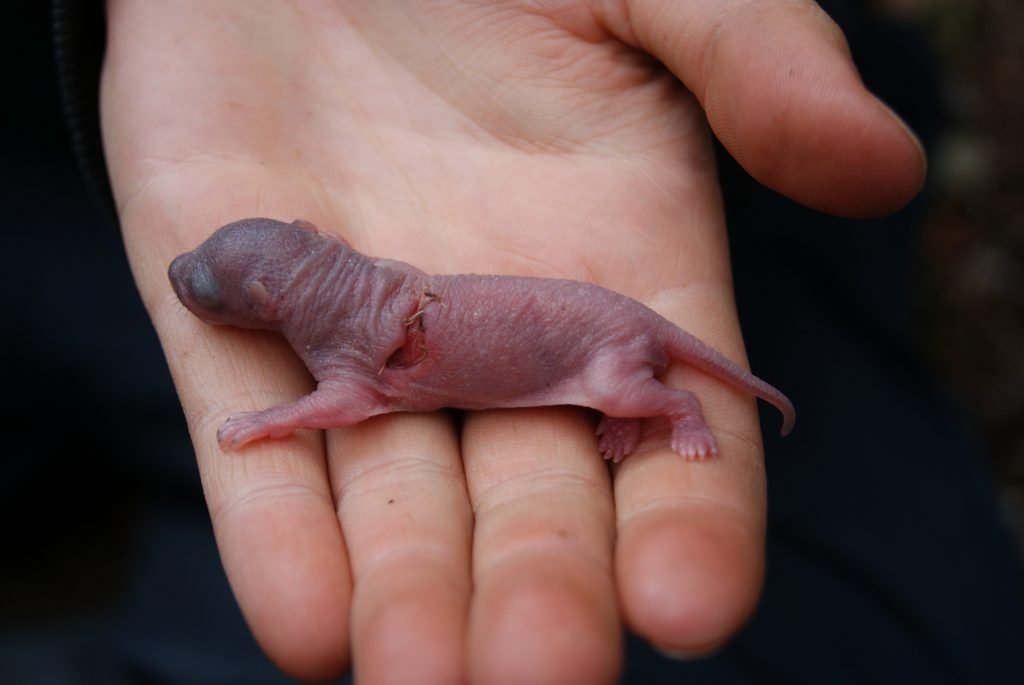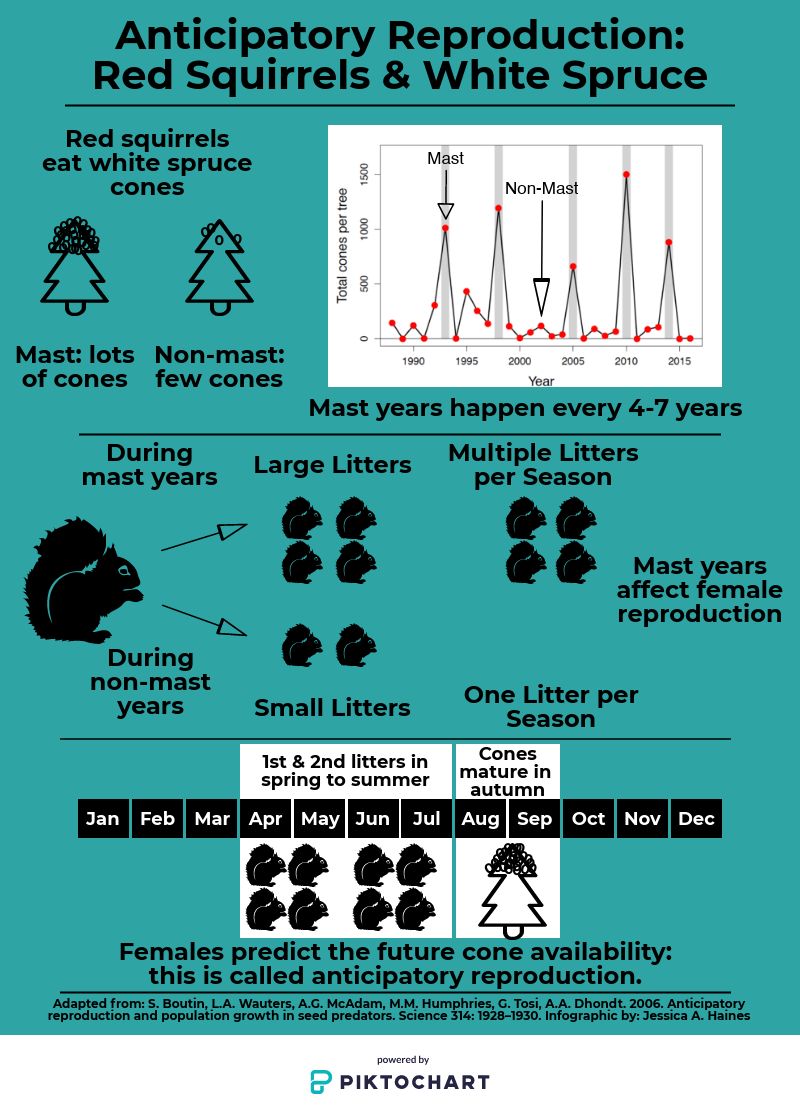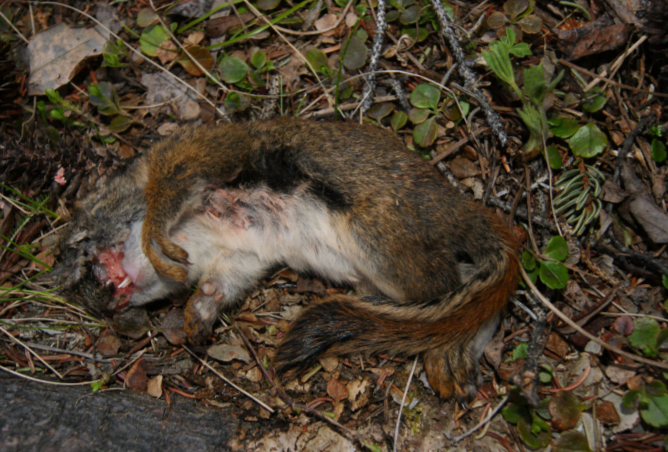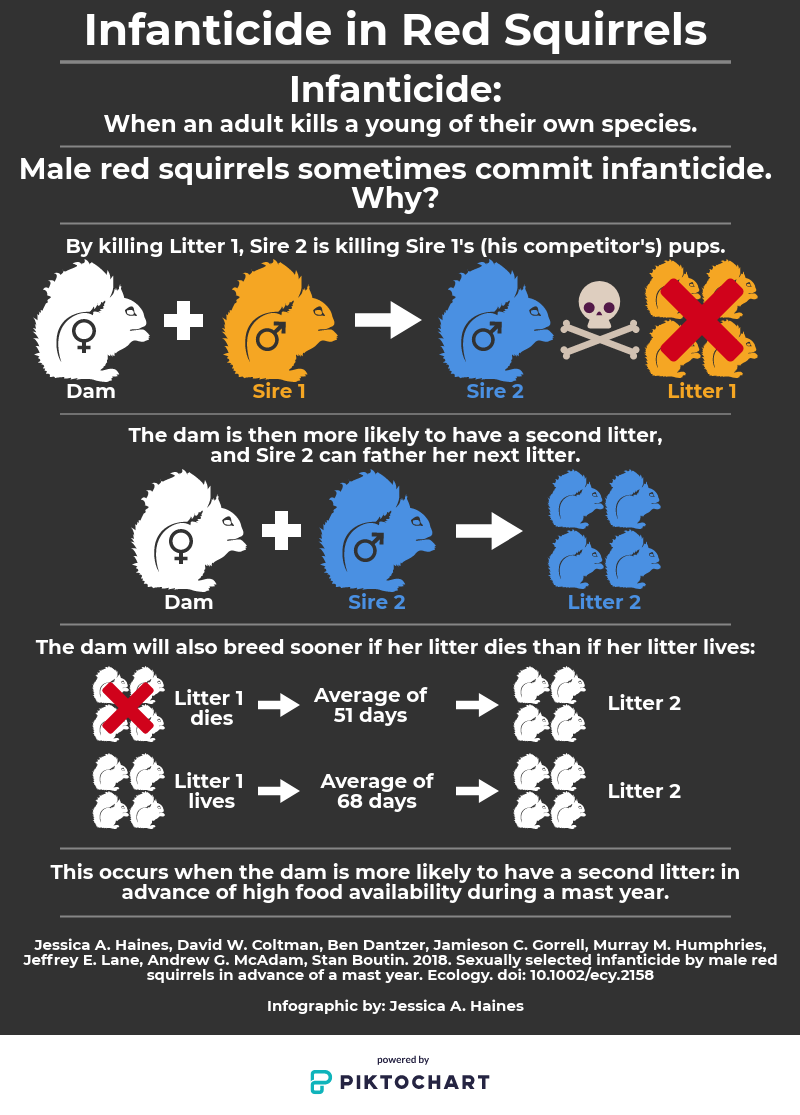
Free Protein and Sexual Success
Free Protein and Sexual Success
10 minute Read – Free Protein and Sexual Success : the benefits of infanticide and cannibalism for northern squirrel populations
If you’ve spent some time in the Yukon, you’re familiar with the seasonal challenges the territory can throw your way: the wildly varying levels of daylight, bush fires, frostbite, and horseflies that could carry off a toddler. Sometimes, life here in the North can be pretty rough. Fortunately, for most people, when the going gets tough, the not-so-tough can throw on the propane heater and order Domino’s. Which, incidentally, is my winter survival strategy.
Unlike me, the denizens of the Yukon wild have had to develop a whole range of interesting adaptation and survival tactics to cope with the extreme winters and the highly variable resource availability that the Yukon has to offer. Migration and hibernation seem to be popular choices for our resident fauna to pass by periods of hateful weather i.e., winter and slim pickings in the food department. Some particularly interesting and, let’s say, pragmatic approaches some tiny beasts have taken to help them survive and thrive is cannibalism and infanticide! Yes, not the prettiest or kindest of survival approaches but there is a dark practicality to it. A surprisingly large number of animals do it but today we’re going to be looking at squirrels!
As my coworkers often remind me, we can’t apply human morality to animals, I still do so from a strictly practical lens, let’s take a look at the benefits of cannibalism and infanticide. Cannibalism is a handy dandy way to reduce your pool of competitors and bolster your own odds of success by turning your rival into a snack. Infanticide has a similar purpose but instead of eliminating your current competion, you eliminate your competitor’s offspring which helps ensure that your babies have better odds at success and your genes have a better chance at remaining in the pool. I’m sorry that I keep saying “your” like this is something you do on weekends. I’m sure you don’t, it’s a non-specific “you”. We are not condoning you kill and eat your neighbours or their children.
Cannibalism and infanticide in the animal kingdom are interesting practices that can magically change conspecifics (animals of the same species) from enemy into food source or, at the very least, a non-issue. This is especially beneficial in areas that have limited or inconsistently available resources which is definitely the case here in the Yukon. We’ll look more in depth into how these benefits apply to squirrels but first, let’s learn a bit more about these fuzzy friends.
Despite both being squirrels and both being known to dabble in cannibalism and infanticide, red squirrels and arctic ground squirrels lead very different lives. Red squirrels are solitary, tree-dwelling creatures that live in non-overlapping territories that they defend aggressively. They base the location of these territories around where they have stashed food. The diet mainly revolves around mast producing trees (trees that produce seeds) that tend to grow wildly different amounts of seeds depending on the year. Remember this, it will be important later. Red squirrels also eat mushrooms, flowers, fruits, bugs, bark, sap, “animal products” (because most rodents are opportunistic omnivores!), and the insulation in the ceiling of my cabin.
Unlike the aggressive loner red squirrel, arctic ground squirrels believe in strength in numbers. They live in large subterranean colonies and even engage in altruistic behavior to keep other members of that colony safe: they’ll stand up on their hind legs and give off an alarm call to warn others of predators. This makes the caller a lot more noticeable to predators in the area but gives their colony buddies better odds of getting away. Isn’t that nice? I think that’s nice.

Instead of toughing out the winter like red squirrels, arctic ground squirrels hibernate through the cold months. After putting on as much fat as possible, they tuck themselves into cozy burrows for a multi-month nap, which in my opinion, is the ideal way to spend your winter. They build that hibernation mass on a generalized and mostly plant-based diet. Unlike red squirrels who rely mainly on tree seeds, ground squirrels are happy to consume any part of a wide range of vegetation including leaves, seeds, buds, and flowers. In addition to their leafy greens, these ground dwelling nuggets supplement their diet with invertebrates and other vertebrates including birds, lemmings, smaller rodents, and, you guessed it, other squirrels!

Now with their highly generalized diet and limited time to pack on the grams before the long winter sleep, the ground squirrel is very opportunistic when it comes to food. There are documented cases of these round little rodents hunting and killing lemmings and many grizzly photos on the internet of arctic ground squirrels chomping through mice and other small rodents (I checked so you don’t have to). If they’re willing to consume the tasty meat of other rodents, why not each other? If you get very, very, VERY practical about it, after they kill a conspecific, that squirrel is just a readily available source of meat. If two squirrels get in a territorial tussle and one kills the other, the formerly-alive squirrel has ceased to be a threat and has instead become a handy source of protein. It’s a truly grisly double win for the victor! These adult-squirrel-eating-adult-squirrel situations seem to be mostly incidental and opportunistic rather than squirrels actively hunting each other but personally, I am not discounting the possibility of a Hannibal Lecter squirrel prowling the Northern underground.
Unfortunately, we’re not just dealing with adult squirrels snacking on adult squirrels here in the Yukon. A study at our very own Kluane Red Squirrel Project spotted a male red squirrel killing the pups of a female squirrel and consuming parts of them. This murderous male hadn’t sired these pups and shuffling these wee baby squirrels from this mortal coil, he was actually increasing his chances of siring pups of his own. How? Good question.
During a mast year, a year when seed producing trees have exceptionally high yield, female red squirrels will have multiple litters of pups. On an average year, if a male squirrel killed a litter of pups that had been sired by another male, it wouldn’t really improve his odds of passing on his genetics because the female squirrel won’t be having another batch of babies until the following season. However, during mast seasons when there are oodles of seeds to nourish the mother and, by extension, her young, having multiple births in one season are both possible and sustainable! Should one of her litters mysteriously die, the female squirrel will be more likely to re-nest giving the infanticidal male an in! Again, if we get very practical about it, it’s an effective strategy.
Not to be left out of some casual cannibalism, some of the pups noted in the Kluane Red Squirrel Project study were missing part of their heads which were presumed to have been consumed. Like the arctic ground squirrels, this was probably opportunistic cannibalism: the male red squirrel was going to kill the pups anyway so he could sire his own babies with the female so why not get a quick protein treat while he’s at it? Fun fact about consuming the head in particular: the brain is a great source of fats and protein similar to the seeds that compose a lot of the red squirrels diet! Okay, maybe that isn’t a fun fact but we’re already in the nightmare zone so let’s discuss it anyway. Squirrels aren’t alone at the brain buffet, the eyes and brain are the preferred soft delicacies for raptors so if you should wake up one morning to find a rabbit head in your yard, it’s probably not a mafia threat and more likely the work of a hawk. There is also anecdotal and documented evidence of picas, racoons, rats, and mice going after the high-fat thought organ of other small mammals and birds. And why not, it’s a soft, easy-to-consume organ packed with amino acids and fats to help these critters power through their high energy lives and if you have built-in chisel teeth, it is not hard to get at. It’s like squishy, fleshy Cliff Bar. Mmmm gross.
FIG. 1. A dead pup whose littermate was killed by an adult male red squirrel. This pup was found dead within 5 m of the nest where the incidence of infanticide was observed. Blood on its chest indicates chest wounds, and its head was partially missing, presumably consumed. The pup that was killed by infanticide had similar wounds inflicted to its chest and upper abdomen. Permission of Use obtained and Credit Dr. Jessica Haines Photo Source: The Science Naturalist
Anyway! If you thought that we were going to leave it there and that I wasn’t going to tell you that arctic ground squirrels are part of the baby butcher brigade, think again! Infanticide is in fact more common with arctic ground squirrels because it isn’t dependent on mast years. That’s right, male ground squirrels can do infanticide anytime!
Despite living in large networks of underground tunnels with many other ground squirrels, male ground squirrels will defend specific territories within that network in order to have exclusive reproductive access to the females in that territory. More ladies, more babies, no competition from other male’s offspring. It doesn’t actually work out that way, but we’ll get to it.
Sometimes, these little dudes will be usurped by another male. When that new male takes over the territory of another male, he settles in to his new home by killing any of the offspring left over by the previous male. This grim form of house cleaning is similar in purpose to what the red squirrels do; they’re reducing competition to their offspring but killing off the offspring of another.
In a study of infanticidal ground squirrels done in our very own Kluane National park, the researcher noted that some of the baby squirrels that were killed as part of these grim housewarmings were found partially consumed. However, there was a lot of flesh left behind and there were definitely more caracasses created than one squirrel could consume so the main purpose of this infanticide was not food. This leads us to an interesting aside: in this same study, it was noted that the males weren’t the only ones to engage in a little casual cannibalism.
After one of the new males had rampaged through his new territory on a baby cleanse, a female from that territory was observed bringing several of her dead offspring above the surface. Was it for a solemn above-ground funeral? Nope, it was so she could eat her freshly killed pups with other females in the area. I guess having a new guy move into town can be a stressful situation and you just really need to decompress with a ladies’ brunch. I would be loathe to see the mimosa that pairs with that.
So there you have it, folks! Squirrels are cute, squirrels are fuzzy, squirrels are highly practical baby-eating cannibals that will improve their rates of survival by any means necessary because being a tiny prey species in the north is a struggle and you need any advantage you can get.
A lot of exciting research on squirrels is happening right here in the Yukon. If you haven’t had our fill yet, check out these resources!
“Sexually selected infanticide by male red squirrels in advance of a mast year”
“Territoriality and male reproductive success in arctic ground squirrels”
Dr. Jessica A. Haines, educator and ecologist, her past work in Kluane and ongoing efforts to connect others with the natural world is a shared goal with the Yukon Wildlife Preserve.

Joelle Ingram
Human of Many Talents
Joelle is a former archaeologist, former wildlife interpreter, and a full-time random fact enthusiast. She received her master’s degree in anthropology from McMaster University. One of the four people who read her thesis gave it the glowing review “It’s a paper that would appeal to very specific group of people,” which is probably why only four people have read it. Her favourite land mammal is a muskox, her favourite aquatic mammal is a narwhal. She thinks it’s important that you know that.








